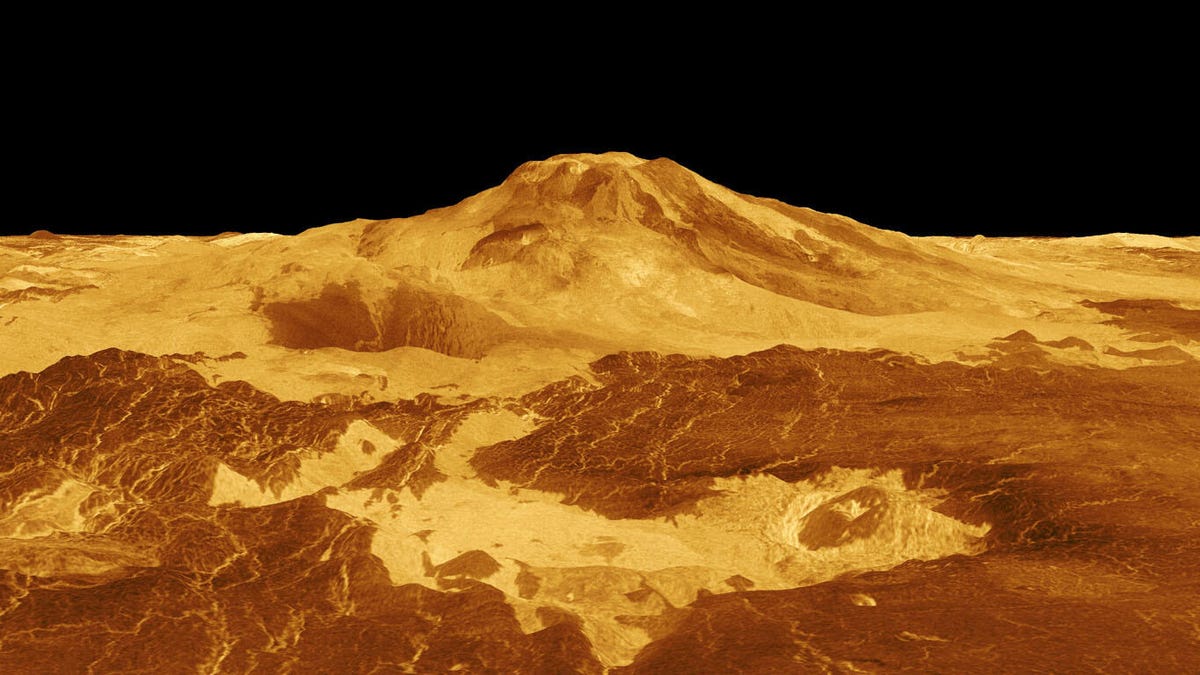Active Venus volcanoes make super hot planet even more unwelcoming
New research suggests more than three dozen spots on the heated world could be ready to blow.

Maat Mons on the surface of Venus could be an active volcano.
We've known for some time now our neighbor Venus is hell off-Earth, but now research suggests it's even worse than we thought.
In addition to its toxic atmosphere and lead-melting (literally) temperatures, the second planet from the sun looks to be home to at least a few dozen active volcanoes belching up brimstone to add to the ambience.
"This is the first time we are able to point to specific structures and say, 'Look, this is not an ancient volcano but one that is active today, dormant perhaps, but not dead,'" said Laurent Montési, geology professor at the University of Maryland, in a release. "This study significantly changes the view of Venus from a mostly inactive planet to one whose interior is still churning and can feed many active volcanoes."
Montési is co-author of a new paper published Monday in Nature Geoscience identifying 37 "recently active volcanic structures" on Venus.
Perhaps ironically, geologically-active planets with hot interiors tend to be better candidates for habitability, because a molten core can also power a magnetic field to deflect sterilizing radiation from the sun and space.
Venus, being the forsaken place it is, is the rare active planet that doesn't generate its own magnetic field internally. This planet is really about as inviting as a mouthful of razor wire.
Scientists have known there is evidence of volcanic activity on Venus for a while, but it was thought it was probably the remnants of ancient activity.
Montési and colleagues used 3D models of Venusian sub-surface activity to look at the features on the surface of the planet in a new way, helping them to identify potentially active hotspots.
The team hopes future missions to Venus could get a better look at its eruptive nature. It may be a while, though, as many space programs are aiming for Mars right now.
However, the BepiColombo spacecraft bound for Mercury will make a pair of flybys past Venus over the next 13 months. So maybe we'll get more familiar with the worst place in the solar system soon enough.

